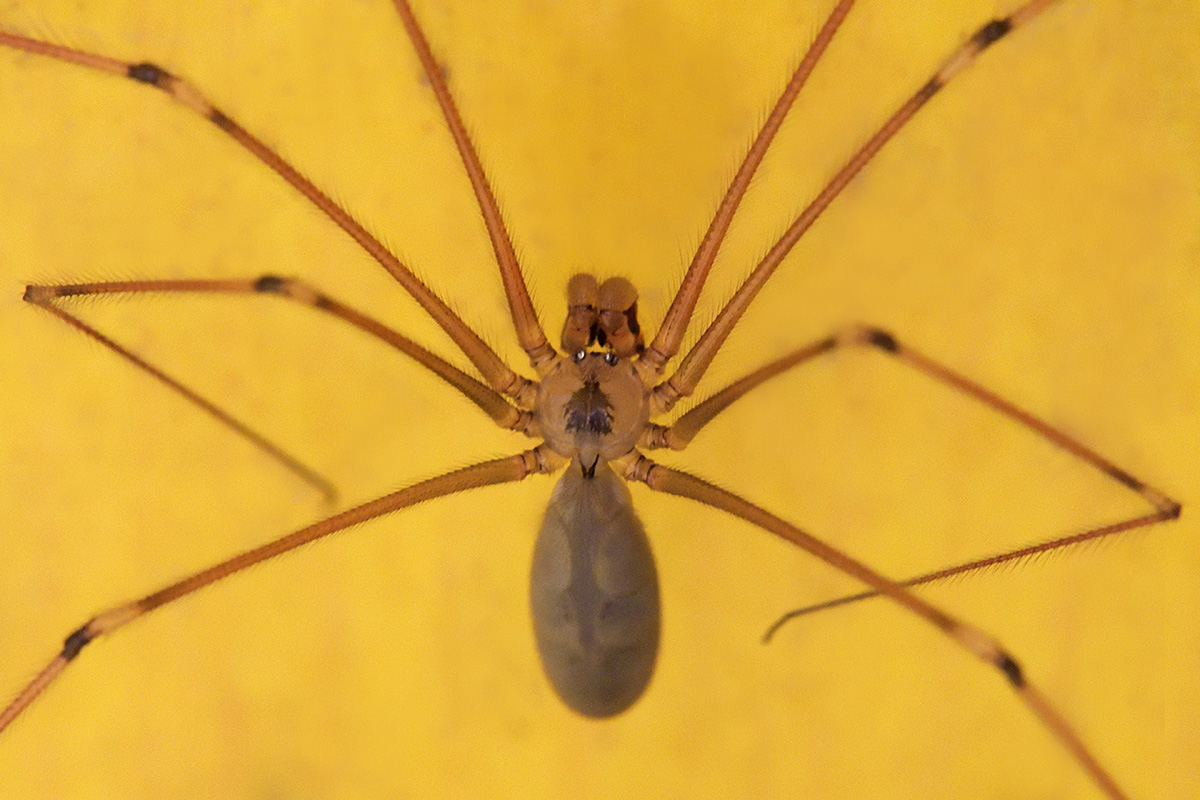While the origin of this species apparently lies in the Mediterranean region, cellar spiders have been transported widely during the course of human commerce and migrations, and now occur around the world. However, the longbodied cellar spider is unable to survive in cold weather, and consequently it is restricted to [heated] houses in some parts of its range.
Cellar spiders construct loose, irregular webs in areas with higher relative humidity, such as homes, sheds, barns and warehouses. Cellar spiders prefer to hang upside down in their webs as they wait for prey, which typically consists of other spiders and insects. If cellar spiders feel threatened they may quickly ‘bounce’ up and down in their web. This behavior serves to disorient predators.
Cellar spiders have a weak venom and, thus, are harmless. On the rare occasions when they do bite humans, the effects are said be a trivial and short-lived sting. As is true of all spiders, actually biting something the size of a human is an absolute last resort.
—
The male cellar spider in my photograph lives behind my garden house in a tool cabinet. Here, I captured it from below against the ceiling of the cabinet. This is where its web is located. [And yes, the light conditions were awful!]
